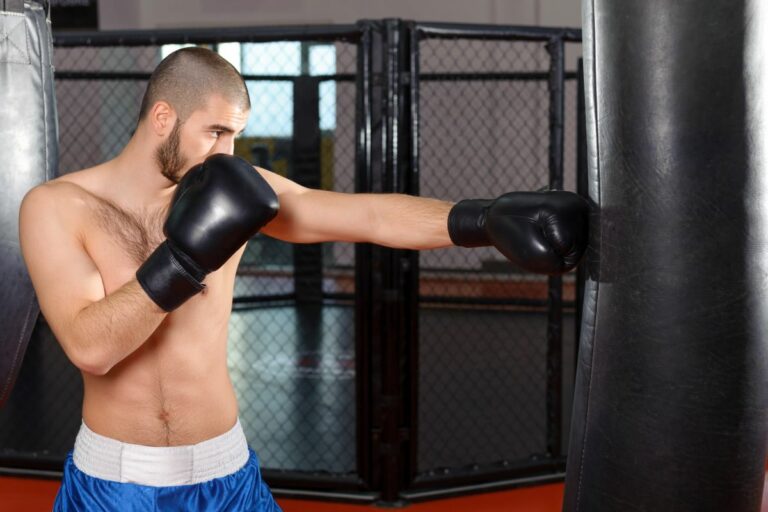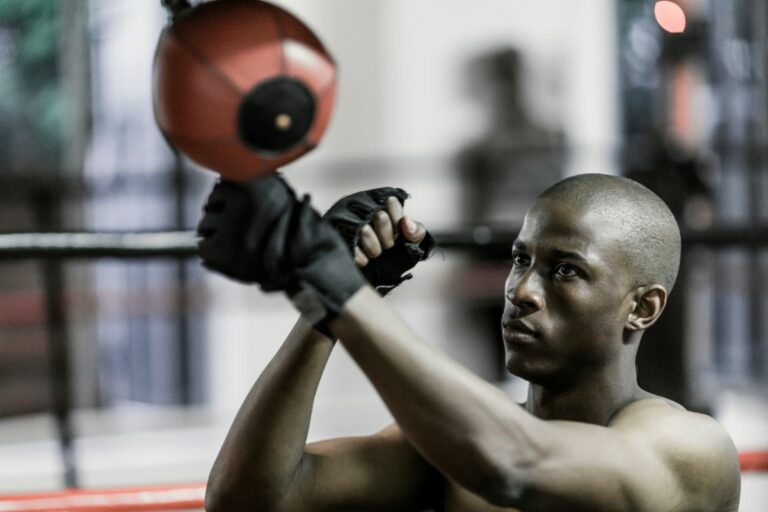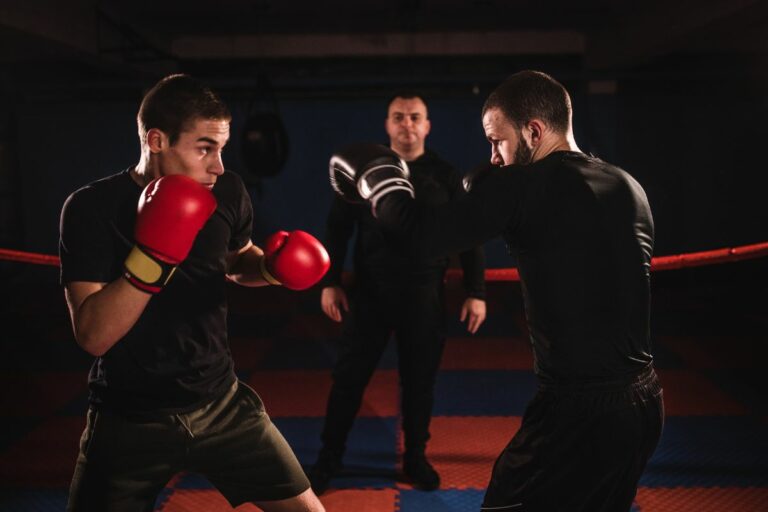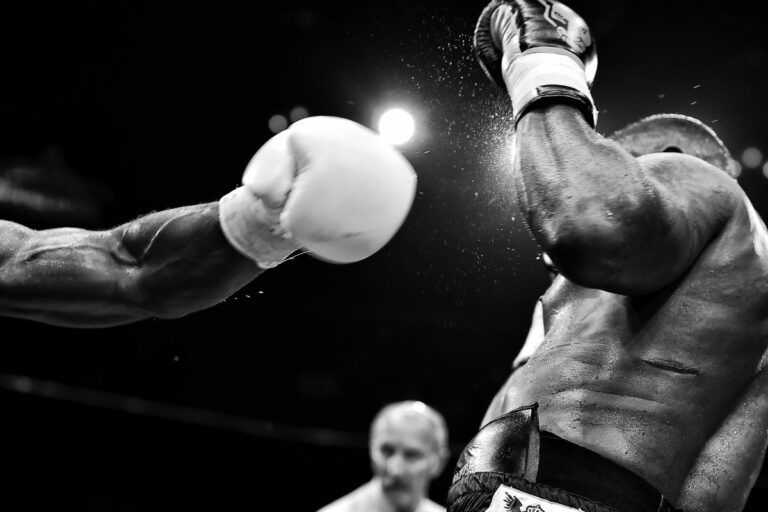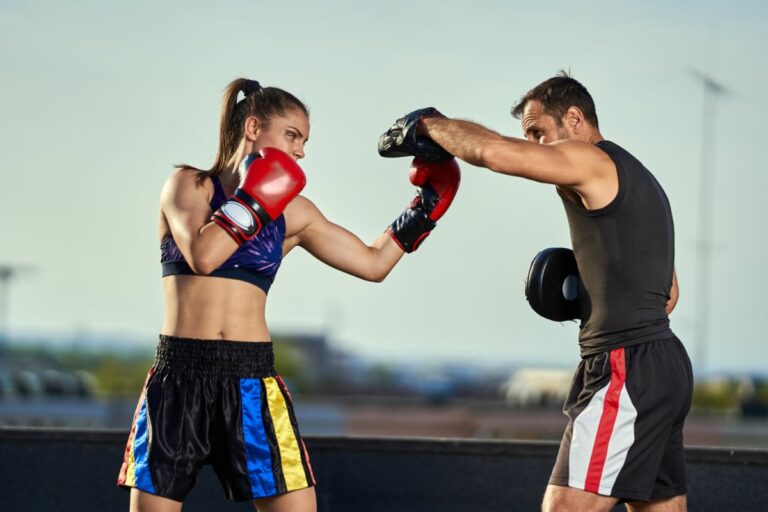Do Boxers Lift Weights & Should They? Strength Training For Boxing
One of the most common questions we get here is whether boxers need to lift weights?
As research and experience continue to develop over time, the world of sport learns how to improve its athletes so that they can perform at their best.
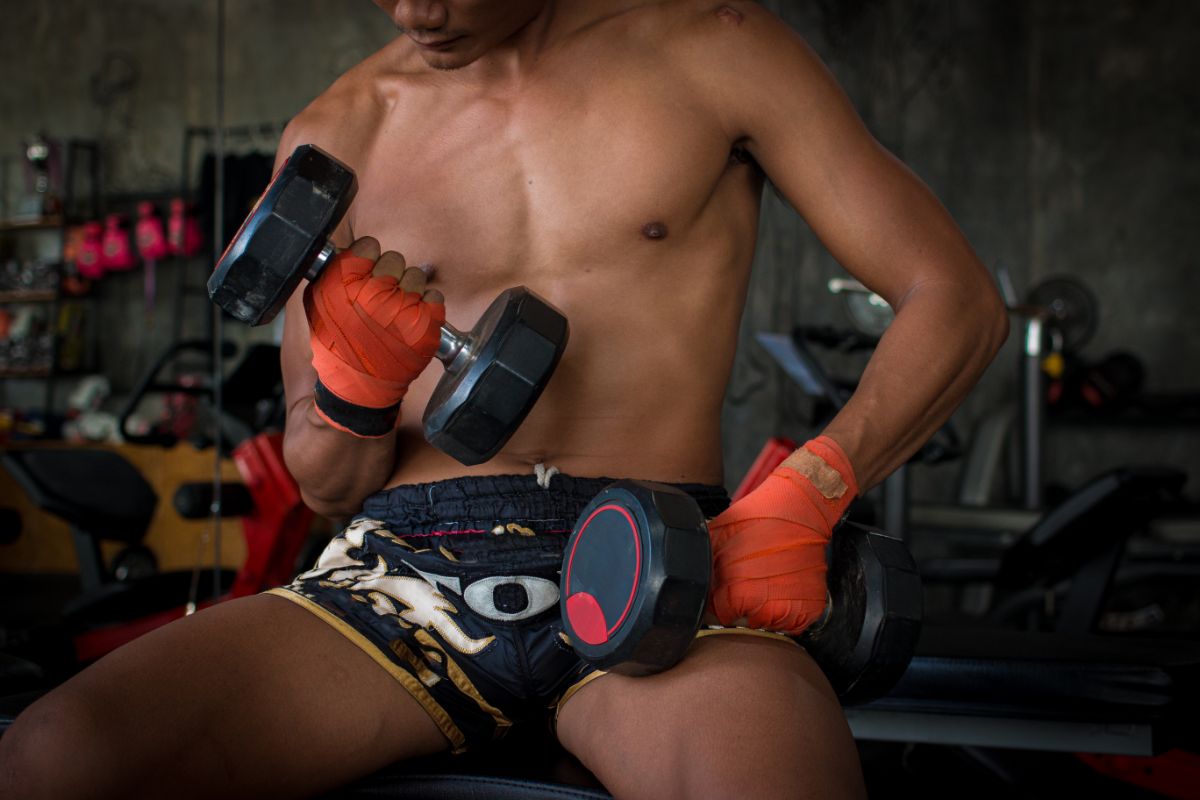
You see, many sporting disciplines use weight lifting as a means to improve certain aspects of their game.
Rugby players will regularly run through strength and conditioning workouts, and long-distance runners will prehab their way to avoid injuries by carrying out lots of leg work and bi-lateral exercises.
The truth is that boxers do lift weights, and they should if they want to stand a chance in the ring, as technique alone will not get you very far.
However, boxers will need to perform a specific modality of lifting weights which is what we shall explore today.
Should Boxers Lift Weights?
A boxer must have some form of weight lifting routine in their weekly workout schedule.
As the culture of lifting weights moves away from the vanity metrics and toward performance, this acceptance of using weightlifting to help translate to other areas of performance
This means that high-level professional boxers and Olympic boxers will have variations of some form of strength training.
One of the major reasons for including weight lifting is to build stronger legs, which is the fundamental process of landing the perfect bunch.
A big misconception of boxing is that all of the work comes from the upper body, i.e. the biceps, triceps, shoulders, chest, and back.
However, a big focus for boxers should be on the glutes, quads, hamstrings, calves, and abdominal muscles, i.e. the core.
We can’t count how many times we see a boxer maximize their upper body workouts thinking that because they use their fists, it’s all about the biceps.
Whereas those boxers that put the time into training their legs see so much more performance improvements. The short answer is to lift weights and do plenty of leg work.
Why Shouldn’t Boxers Lift Weights Like A Bodybuilder Or A Powerlifter?
Certain types of weight training may actually hinder a boxer’s progress. Therefore, a fighter should keep in mind what type of weights they should be doing.
Whilst a mixture of volume and intensity can be a benefit, lifting in the style of a bodybuilder for looks, for example, may not translate well into a fighting situation.
Bodybuilders will typically train for hypertrophy, and maximize muscle gains. Whereas a fighter needs to be able to hurt someone. There’s no point looking good if you are unable to win a boxing match because you are all show.
Boxers also want to avoid training like a powerlifter. Powerlifter’s Main focus is to lift as much weight as possible for one rep.
This may seem like a strong attribute to have for a boxer, you need to remember that boxes are going to be working over many rounds that can last up to 3 minutes.
Simply focusing on strength will not translate well to a boxing match. It’s very rare for somebody to ask what boxer benches or deadlifts are.
Focusing on these movement patterns is a useful tool, but not what a boxer should be putting their major focus on.
How Should A Boxer Lift Weights?
When lifting weights, boxers should do less volume, but high intensity. They should also seek to work on their speed and power.
When we consider what type of exercises they should do, we would look at exercises such as jump squats, push-ups, inverted rows, pull-ups, and a dedicated neck training routine.
A boxer will need to train both their fast-twitch and slow-twitch muscle fibers. whereas bodybuilding preferentially builds type 1 muscle fibers which are the slow-twitch muscle fibers.
List of training for fatigue and muscle each session which can lead to injury and reduced performance, which is not ideal for our boxer that has a sparring session straight afterward or the following day.
With powerlifting style training, you lose the speed aspect of training, and you only focus on getting good at 3 specific movements.
Do Lifting Weights Make You Slower?
A popular question we get is whether lifting weights is going to slow down a fighter? The truth is that a well-designed program will not slow down a boxer. The problem arises when the box of trains is an incorrect modality for their Sport.
We’ve already alluded to the notion that a boxer should not train like a bodybuilder or a powerlifter. and the problem comes when boxes follow a standard bodybuilding routine or generic one rep max powerlifting program.
This approach fails to take into consideration speed and power which are vital attributes for a boxer to have.
We wouldn’t want to see exercises that allow for explosive movements at high velocity, for example, squat jumps and medicine ball throws will allow for improved speed and power output that would improve the speed of the boxer.
A generic bodybuilding program could potentially slow down a boxer as it specifically works on time under tension to work hypertrophy, which is not what a boxer needs.
As a boxer gets stronger in one movement pattern, for example, the bench press, you will improve the activation of those prime mover muscles; the triceps, shoulders, and pectorals.
Along with this, you also improve the contraction of the muscles around the joints which can allow for Protection of the joint from injury when lifting heavy.
For example, in a bench press, the triceps or contract helps stabilize the elbow joint, no this is unfavorable for a boxer as fast muscles should. not contract together around the joint. What we want to see are activation and relaxation.
Take a world-class sprinter: they can relax muscles during sprinting much better than an average sprinter.
The most effective way to improve a punch is to practice punching. But just behind this is a supplemented weight lifting routine that looks at jumping, throwing, and ballistic movement patterns.
How Often Should You Lift Weights As A Boxer?
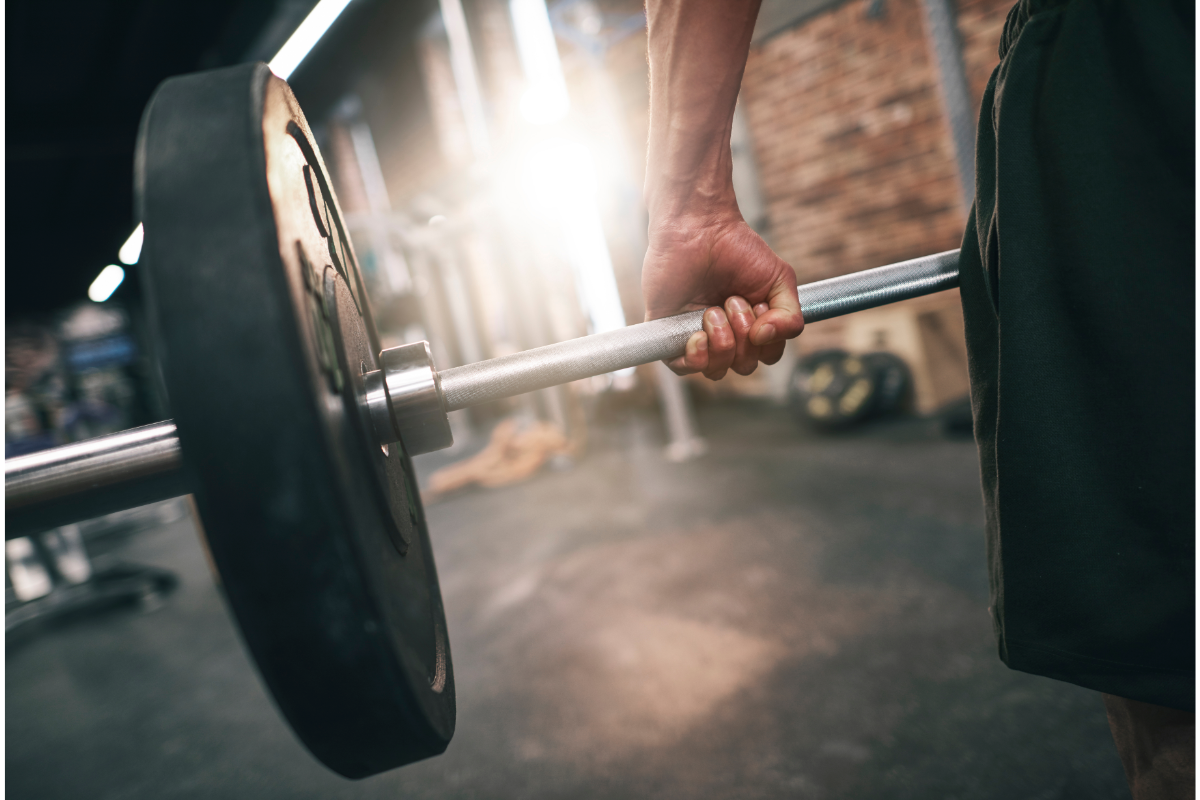
How many times you should lift depends on your experience level and your goals as a boxer. However, as a general rule of thumb, boxers should lift weights anywhere from 1 to 3 times a week.
These sessions should include a combination of strength work, speed work, and explosive power work.
You may want to consider taking this off if you are coming close to about, as you don’t want to risk overtraining before a fight. This will help manage your fatigue and keep you as fresh as possible for your upcoming fight.
However not everyone is looking to compete in a boxing match, and many of our readers simply do boxing and sparring for fitness purposes.
With that said, twice a week is a good amount of training to do, which also gives you a chance to work on your boxing and sparring.
It may also depend on the weight category you box at, due to differences in size and weight carried.
Heavyweights
Heavyweights are the biggest in terms of size, strength, and mass. Even Still a heavyweight boxer, I need to do some form of weightlifting. Just because they are bigger and stronger does not always mean that they don’t have enough speed or power.
The other fundamental lifting weights as it increases the chance of injury, and the more you protect your ligaments and joints from fire resistance training the less chance you have of being kept in the stands.
The good news is with heavyweights, a lot of the time they are already going to be at peak strength levels, and so all they will need to do is maintain their current muscle mass and strength without needing to put too much effort into building their bodies.
Some heavyweights that are seasoned may only need to train once or twice a week, whereas a beginner heavyweight is probably looking at closer to 3 sessions per week.
Middleweights
Just like heavyweights, middleweight classes of boxing should also look to lift weights and it would be a mistake to assume that lifting weights will increase your body weight to jump you up a weight class.
Another benefit of lifting weights is that it can help to oxidize fat stores, which can often slow down a boxer, especially boxes that are in the middle categories.
Similar to heavyweights, more experienced middleweights can get away with fewer sessions, perhaps 1 to 2 sessions per week, whereas ranked beginners should look at a train up to three times per week.
Lightweights
You need to look at some of the most famous lightweight category boxers like Manny Pacquiao and Juan Manuel Marquez To see that a lot of their focus is not actually in the weight room, and is on perfecting speed and movement.
The less mass you have, the less force you are going to produce, and say the focus should be on scoring clean punches over becoming a Knockout artist.
There are exceptions to every rule, but the general rule of thumb is that doing too much resistance training may hinder lighter boxers.
Whilst the majority of a lightweight boxer’s training is going to be focused on cardio, conditioning, and skills, you may want to only dedicate 1 to 2 sessions per week to lifting weights at this weight level.
Can You Build Muscle Without Resistance Training?
One of the benefits of lifting weights is increased muscle mass, and the easiest way to do this is to follow a plan that adheres to progressive overload. Lifting more weight each time will help to build muscle and stop you from plateauing.
Very rarely do we see boxers with lots of muscle mass that don’t lift weights.
Whilst bodyweight exercises, calisthenics, and plyometrics are a great staple for any training program, they should be used in combination with lifting weights, otherwise, you limit your capacity to improve.
Most Common Exercises For Boxers

Let’s take a look at some of the most common exercises that you should probably feature in your resistance training program as a boxer.
This is not an exhaustive list, but it is a fundamentalist and each of these exercises should be included in some form or some variation in your program.
Crunches
Starting with the abdominal muscles, crunches are a simple exercise to help build up the abdominal muscles and improve core stability.
The Trunk is an integral part of the boxer, and a weak trunk means you are going to be compromised with your power but also your ability to take body punches.
Crunches are a safe exercise and can be done anywhere. We also recommend that you do some kind of twisting motion as well; bicycles are good for this, and you can also include some lower at work, i.e. leg raises or hanging leg raises.
Lunges
Lunges can be brutal but are one of the most effective bilateral leg exercises you can do.
Only building your leg muscles, they are one of the best exercises for reducing the risk of injury, as working one leg at a time can help to iron out any muscular imbalances you may have.
One of the other underrated utilisations of lunges is that they also help to build up core stability, and can help a boxer with their air movement and footwork in the ring.
You can either do a conventional lunch where you bring your leg out in front of you, or you can do reverse lunges that will work different muscle groups, as well as lateral lunges that bring them out to the side for a slightly different workout.
Deadlifts
Deadlifts are one of the most grueling exercises you can complete, and they are not just reserved for powerlifters looking for a one-rep max.
We love deadlifts because they work every single muscle group in the body. They require excellent mobility, good lower body strength, as well as good core stability and you also need good upper body strength to complete a deadlift.
Similar to the lunge, Deadlifts will help to build balance and stability which is typically one of the most important attributes for a boxer, as you are moving around the ring a lot, and if you do happen to get rattled it helps you to maintain your upright posture.
Squats
Squats can be considered the king of lower body exercises, alongside deadlift which also features a lot of upper body muscles.
This will help a boxer build overall strength as well as power in their legs.
As we’ve already mentioned, a boxer is only as good as his leg strength, so making sure that there are plenty of leg exercises in your workout routine should prevent you from losing unnecessary power in your punches.
As the muscles in your legs are the biggest in your body, especially the glutes and quadriceps, you should look to build these up to help you punch, block, and move around as swiftly as possible.
Inverted Rows
It goes without saying that a boxer should also have a very strong back, as this will help with your punching power.
Rows will help to hit your back muscles as well as build the biceps up to a better level, which also helps with power.
We personally prefer inverted rows as they are more challenging to stay consistent in your form, and also can be done pretty much anywhere as long as you have a horizontal bar to hang on to.
You can also do bent-over rows, cable rows, or even TRX rows depending on your level of fitness and how conditioned you are to resistance training.
Along with many of the other exercises included in the list, inverted rows, as well as bent-over rows and TRX rows, will help to build your core stability.
Front Lateral Raises
One of the most common injuries we see in boxers is a damaged shoulder, so making sure you look after your shoulder and keep them healthy is vital for long-term success in boxing.
Front lateral raises are a great exercise because they help to rotate your shoulder, in other words blocking punches and getting out of the way is what helps to build.
Not only do they build up the deltoids, but they also work the rotator cuff muscles which is an important piece of the shoulder health puzzle.
Push-Ups
The push-up is my personal favorite and is often an under-utilized exercise. Not only is it one of the most accessible exercises, but it’s one of the best exercises for keeping your shoulders healthy and can be done anywhere.
Although we often see this muscle group be more developed than other muscle groups because it’s considered a vanity muscle. This is an important aspect for boxers as it will extend the shoulder away from the body.
This muscle, AKA the boxer’s muscle, is the muscle inside your shoulder blade.
One of its main functions is to connect the chest muscles to your rib cage. This improves a fighter’s reach, making it not only a good muscle builder but a helpful exercise for building up your punching distance.
Dedicated Arm Work
We also decided to put dedicated artwork into our list as it would be remiss of us not to have some form of workout in your program.
Even though the majority of your results will come from the above exercises, having some isolation work for the biceps and triceps would be prudent as it can only help build upper boxers’ strength.
As long as most of the focus is on the compound movements, which are exercises that work for multiple muscle groups at once, then throwing in some arm work is not going to be detrimental to your progress.
You do not need to overcomplicate homework, as long as you have some sort of bicep curl and some kind of price of extension you’ll be working out the muscles effectively.
Final Thoughts
We recommend that all boxes have some form of resistance training in the weekly workouts. incorporating weightlifting depending on your experience level and weight class should help to build a complete boxer.
Use the exercises listed above and you’ll be well on your way to being a more efficient and deadly fighter.


